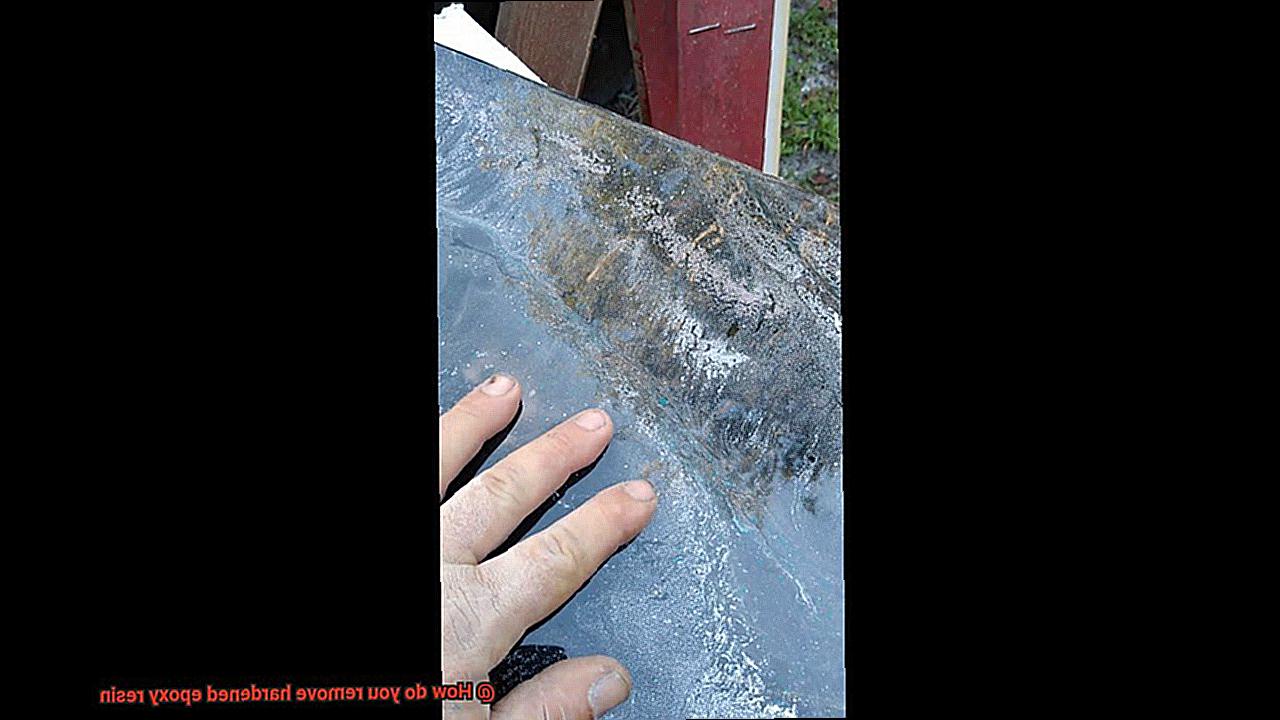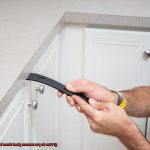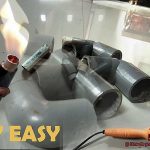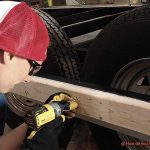Epoxy resin is the superhero of DIY materials. It’s versatile, durable, and has a wide range of applications that make it a go-to for many projects. However, even superheroes have their weaknesses, and for epoxy resin, it’s the stubborn residue that can be left behind when things don’t go according to plan. Whether you’ve got sticky hands or tools covered in hardened epoxy resin, fear not. There are ways to remove it safely and efficiently.
In this blog post, we’ll explore various methods to get rid of hardened epoxy resin. From using solvents to sanding and heating techniques, we’ll cover all the bases so you can choose the best method for your situation. We’ll also discuss safety precautions you need to take because let’s face it; safety always comes first.
Whether you’re an experienced epoxy user or just starting out, knowing how to remove hardened epoxy resin is a must-have skill. So buckle up and let’s dive into this world of removing pesky epoxy residues together. With these tips and tricks up your sleeve, you’ll have your projects back on track in no time.
What is Hardened Epoxy Resin?
Contents
- 1 What is Hardened Epoxy Resin?
- 2 Common Methods for Removing Hardened Epoxy Resin
- 3 Heat Gun/Hair Dryer Method
- 4 Chemical Solvent Method
- 5 Mechanical Method
- 6 Safety Precautions When Removing Epoxy Resin
- 7 Tips for Effective Removal of Hardened Epoxy Resin
- 8 Disposal of Chemicals and Materials Used in Removal Process
- 9 Conclusion
Hardened epoxy resin is an incredibly versatile and durable adhesive that can be used in a wide range of applications, including construction, art, and automotive repairs. This adhesive is created by mixing two or more chemical components together, which then undergo a chemical reaction and result in a hard and resilient material.
One of the most significant advantages of hardened epoxy resin is its ability to bond to various materials, including metals, plastics, ceramics, and wood. Moreover, it can be used as a coating or sealant to protect surfaces from water damage, corrosion, and many other types of wear and tear.
However, there are instances where you may need to remove hardened epoxy resin. This can happen if the material was applied incorrectly or if it needs to be replaced for some other reason. Removing hardened epoxy resin can be a challenging task since it is designed to be long-lasting and durable.
There are several methods available for removing hardened epoxy resin safely and effectively. One approach involves using a heat gun or hair dryer to soften the resin before scraping it off with a putty knife or scraper. This method is ideal for small areas and most surfaces but can be time-consuming and may require multiple applications.
Another option is to use chemical solvents such as acetone or denatured alcohol to dissolve the resin. This method is effective for larger areas but can be messy and may require proper ventilation and protective gear. It’s crucial to test a small area first before applying it to the entire surface to avoid damaging certain materials.
For thicker layers of epoxy resin, mechanical methods such as sanding or grinding may be necessary. However, this method should only be used on durable surfaces such as metal or concrete and requires proper safety gear such as a dust mask and eye protection.
It’s essential always to follow proper safety precautions when removing epoxy resin, including wearing protective gear, working in a well-ventilated area, and properly disposing of any chemicals or materials used in the removal process.
Common Methods for Removing Hardened Epoxy Resin
Working with epoxy resin can be a rewarding and satisfying experience, but it’s not without its challenges. One of the most frustrating aspects of working with epoxy is trying to remove hardened resin that has stubbornly clung to your project. Thankfully, there are several common methods for tackling this problem.
One popular method for removing hardened epoxy resin involves using heat to soften the material. This can be achieved using a heat gun, hair dryer, or even by placing the object in a warm oven for a short period. Applying heat will soften the resin and make it easier to remove. However, caution must be exercised not to overheat the resin or underlying surface.
Another approach is to use solvents to dissolve the epoxy. Acetone is a commonly used solvent because it can break down the chemical bonds in the resin and make it easier to remove. Other solvents like alcohol, mineral spirits, and vinegar can also be effective. These solvents work by dissolving the resin and breaking down its chemical structure.
Mechanical removal is also an option but requires some effort and caution. This involves using abrasive tools such as sandpaper or a wire brush to physically scrape away the hardened resin. Although this method can be effective, it may damage the underlying surface if not used carefully.
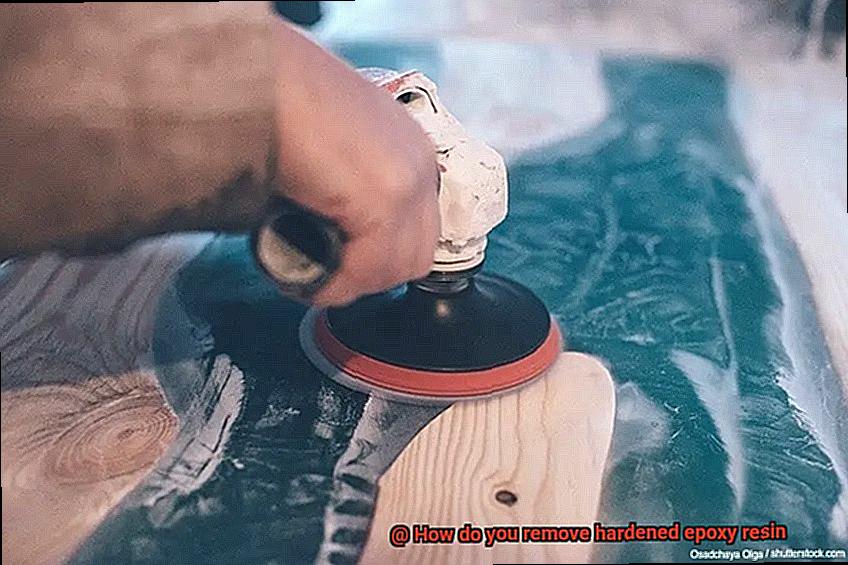
Chemical removers are another option for removing hardened epoxy resin. These products work by breaking down the chemical bonds in the resin and making it easier to remove. However, it’s essential to choose a remover that is safe for the surface being treated and to follow all safety precautions when using these products.
When choosing a method for removing hardened epoxy resin, consider factors such as the type of surface being treated and the extent of the build-up. With patience and careful attention, you’ll be able to effectively remove hardened epoxy resin and get back to your project in no time.
In summary, here are some common methods for removing epoxy resin:
Heat Gun/Hair Dryer Method
The heat gun/hair dryer method is here to save the day. As an expert in this method, I’m here to share with you the step-by-step process and tips for success.
To embark on this journey, you’ll need a heat gun or hair dryer, a scraper, and protective gear such as gloves and safety glasses. Once you have all the materials ready, it’s time to dive in.
Begin by heating the hardened epoxy resin with the heat gun or hair dryer on high heat. Keep the tool moving back and forth over the affected area until the epoxy resin begins to soften and become pliable. This step requires patience as it can take several minutes depending on the thickness of the resin and the size of the area.
Once the epoxy resin has softened, gently use a scraper to remove it from the surface. Be sure to apply even pressure as you scrape away the resin to avoid scratching or damaging the underlying surface. If necessary, reheat the area with the heat gun or hair dryer to further soften any remaining epoxy resin.
It’s important to note that using a heat gun/hair dryer can release fumes that are harmful if inhaled. Therefore, it’s vital to wear protective gear and work in a well-ventilated area. Additionally, always be cautious when using a heat gun as it can cause burns if not handled properly. Always keep a safe distance from the surface being treated and avoid touching the nozzle of the heat gun while it’s hot.
In summary, here are some key takeaways to remember when using the heat gun/hair dryer method:
- Materials needed: heat gun or hair dryer, scraper, protective gear
- Heat the hardened epoxy resin until it becomes pliable
- Gently scrape off the softened resin without damaging the underlying surface
- Reheat as necessary
- Wear protective gear and work in a well-ventilated area
- Be cautious when using a heat gun to avoid burns
Chemical Solvent Method
If you’ve ever found yourself struggling with hardened epoxy resin, fear not – there is a solution. Chemical solvents are one of the most effective methods for dissolving and removing pesky hardened epoxy resin. Allow me, an expert in this field, to guide you through the different types of chemical solvents available, their varying strengths and weaknesses, and the necessary safety precautions to take when using them.
First things first – chemical solvents are compounds that dissolve the hardened resin and make it easier to remove. There are three commonly used chemical solvents: acetone, denatured alcohol, and methyl ethyl ketone (MEK).
Acetone is a potent solvent that can dissolve epoxy resin quickly and effectively. However, it can also damage certain surfaces such as plastic or some types of wood. It’s crucial to wear protective gloves and work in a well-ventilated area when using acetone.
Denatured alcohol is less potent than acetone but still effective in dissolving the resin. It’s also less likely to damage surfaces than acetone but may take a bit longer to dissolve the resin.
MEK is a powerful solvent that can quickly dissolve epoxy resin. However, it’s highly flammable and toxic. It should only be used in well-ventilated areas with proper protective equipment.
Now let’s talk about safety precautions. Regardless of the solvent used, it’s vital to prioritize your safety when using chemical solvents. Always wear protective gloves and clothing, work in a well-ventilated area, and avoid any contact with skin or eyes. Additionally, always dispose of any used solvents properly according to local regulations.
Mechanical Method
I am here to share my expertise on the topic of mechanical methods.
Mechanical methods are perhaps the most common ways to remove hardened epoxy resin. They involve physically scraping or sanding off the stubborn material from the surface it is bonded to. While these methods can be time-consuming and labor-intensive, they are highly effective in getting the job done.
If you’re dealing with a small area, using a scraper tool is a great option. This method involves gently scraping off the epoxy from the surface with a plastic scraper. However, be careful not to damage or scratch the underlying surface.
For larger areas, sanding with high grit sandpaper is your best bet. Sanding can be done by hand or with an electric sander, but be sure to use a high grit sandpaper of 220 or higher. Use circular motions until the epoxy is removed, then clean the surface thoroughly with soap and water.
In some cases, power tools such as grinders or rotary tools with abrasive attachments may be necessary for larger surfaces. However, it’s important to use these tools with caution as they can cause damage if not used properly. Always wear protective gear such as gloves, goggles, and a mask when using power tools.
Safety Precautions When Removing Epoxy Resin
Epoxy resin can be dangerous if not handled with care, so taking the necessary precautions is crucial.
Protective gear is essential and must include gloves, goggles, and a respirator mask. These items will help protect you from any potential hazards during the removal process. Gloves are useful for keeping your hands safe from contact with the resin, while goggles will shield your eyes from any possible splashes or spills. A respirator mask will filter out any harmful vapors that may be released while removing the resin.
Working in a well-ventilated area is critical to avoid inhaling any fumes. If possible, remove the epoxy resin outdoors or in an area with open windows and good airflow. If you are working indoors, consider using a fan or ventilation system to circulate the air.
Before beginning the removal process, make sure to read the manufacturer’s instructions carefully and follow them precisely. Some resins may require specific removal methods or solvents, so it is crucial to know what you are working with.
When removing the epoxy resin, use gentle and controlled movements to avoid creating any dust or debris. If using power tools such as a grinder or sander, make sure to wear a dust mask and eye protection.
Finally, proper disposal of leftover resin and cleaning materials is critical. Epoxy resin should not be poured down the drain or disposed of in the trash. Check with your local waste management facility for proper disposal methods.
Tips for Effective Removal of Hardened Epoxy Resin
Removing hardened epoxy resin can be a daunting task, but with the right tools and techniques, it can be done effectively. Here are five tips to help you remove hardened epoxy resin from any surface:
Apply Heat
One of the most effective ways to remove hardened epoxy resin is by using heat to soften it. You can use a heat gun or hairdryer to apply heat to the hardened resin. However, it’s important to exercise caution as too much heat can damage the surface underneath.
Use Chemical Solvents
Chemical solvents such as acetone or rubbing alcohol can dissolve epoxy resin. Simply apply the solvent to the hardened epoxy and let it soak for a few minutes before scraping it away with a plastic scraper. But always remember to wear gloves and work in a well-ventilated area.
Scrape with a Razor Blade
Using a razor blade or scraper can also be an effective method for removing hardened epoxy resin. It’s essential to use a sharp blade and take care not to damage the underlying surface.
Sand the Surface
Sanding the surface can also help remove hardened epoxy resin. This method works best when the epoxy is only partially cured, and you need to use fine-grit sandpaper and work slowly to avoid damaging the underlying surface.
Mechanical Removal Tools
There are many mechanical removal tools available that can make removing hardened epoxy resin easier. These include rotary tools, angle grinders, and sanders. It’s crucial to choose the right tool for the job and use it carefully to avoid damaging the underlying surface.
Disposal of Chemicals and Materials Used in Removal Process
It’s a vital step towards ensuring safety and environmental responsibility. Neglecting to dispose of these items correctly can result in harm to individuals and the environment.
When it comes to disposing of chemicals, it’s essential to follow local regulations and guidelines. This may entail contacting your local waste management facility or hazardous waste disposal company for proper disposal methods. Additionally, it’s crucial to label any chemical containers clearly and store them in a secure location until they can be disposed of appropriately.
But it’s not just about chemicals – materials used in the removal process also require proper disposal. Even gloves, brushes, and rags that have been used may contain traces of hardened epoxy resin or chemicals used in the removal process. To prevent potential harm, it’s recommended to dispose of these materials as hazardous waste.
Moreover, taking preventative measures during the removal process can minimize waste production. You could consider using reusable gloves and brushes instead of disposable ones, or using a scraper instead of sandpaper to reduce airborne debris.
LyoSLySmOI8″ >
Conclusion
In summary, getting rid of hardened epoxy resin can be a daunting task. However, fear not. Armed with the right tools and techniques, you can safely and efficiently remove it. Whether you opt for heat, chemical solvents or mechanical methods such as sanding or scraping, make sure you prioritize safety by donning protective gear and working in a well-ventilated area.
It’s also crucial to dispose of chemicals and materials used in the removal process responsibly. Follow local regulations and guidelines to ensure environmental responsibility. Taking preventative measures during the removal process can also help minimize waste production.
In conclusion, knowing how to remove hardened epoxy resin is an essential skill for anyone working with this versatile material. With the tips and tricks outlined in this article, even the most stubborn residues will be no match for you.

